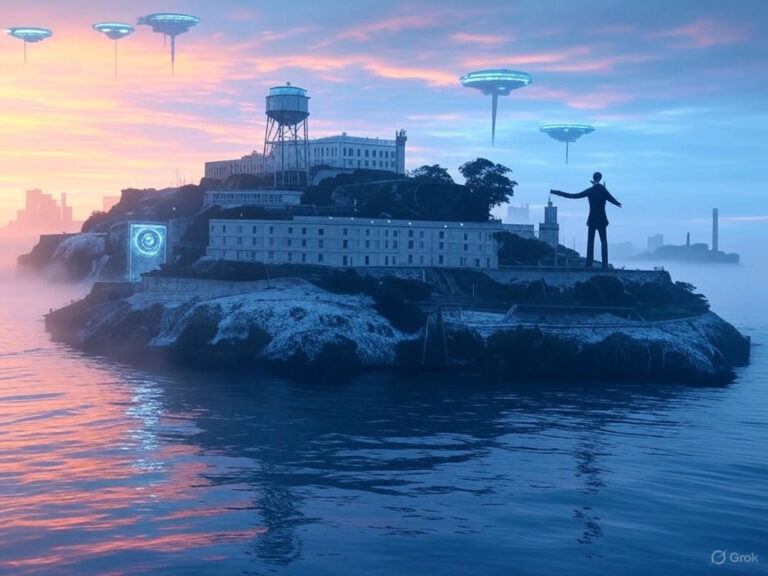
Gaza Occupation Plan: Netanyahu’s Announcement and Strategic Timing Insights
Introduction
The Gaza occupation plan has thrust the Israeli-Palestinian conflict into a new phase, with Prime Minister Benjamin Netanyahu’s recent announcement drawing sharp global attention. This move involves an expanded military presence in key Gaza areas, raising alarms about humanitarian tolls and strategic shifts. As tensions escalate, it’s crucial to unpack how this decision could reshape the region’s future—think about the ripple effects on families caught in the crossfire.
Unpacking the Gaza Occupation Plan: Key Elements from the Israeli Cabinet’s Decision
Late Sunday, the Israeli security cabinet greenlit a blueprint that marks a shift toward full occupation of significant Gaza territories, moving beyond sporadic raids to sustained control. This Gaza occupation plan emphasizes relocating Palestinian civilians southward, aiming to dismantle Hamas’s influence while prioritizing Israeli security. It’s a bold step that could redefine the conflict’s dynamics, but at what cost to everyday lives?
- Expansion of control: Israeli forces now have the green light to occupy and hold key areas, potentially altering borders and security protocols indefinitely.
- Palestinian displacement: A core strategy involves moving civilians, which critics argue echoes historical displacements and heightens vulnerabilities.
- Humanitarian aid constraints: While limited aid is permitted, the plan blocks Hamas from managing distributions, sparking debates on access and equity.
- Indefinite timeline: Without a clear withdrawal plan, this approach raises questions about long-term implications for stability.
Have you ever wondered how such decisions affect ordinary people? Imagine families packing up essentials overnight, facing uncertainty amid the chaos—this Gaza occupation plan isn’t just policy; it’s a human story unfolding in real time.
Strategic Timing: Insights into Netanyahu’s Gaza Occupation Strategy
Alignment with Domestic and International Events
Netanyahu’s timing for rolling out the Gaza occupation plan feels calculated, coming right after a Houthi missile strike on Tel Aviv and amid growing calls for a ceasefire. This move signals resolve against threats while navigating internal politics, positioning Israel firmly before any international agreements could limit options. It’s like playing chess on a global stage, where every move counts.
Key Strategic Considerations
- Global attention: By announcing during heightened media focus, the Gaza occupation plan seizes the narrative and underscores Israel’s defensive posture.
- Leverage in negotiations: This could strengthen Israel’s hand in peace talks, turning territorial control into a bargaining chip.
- Internal political calculus: With domestic opinions split, Netanyahu might be rallying support from those prioritizing security over diplomacy.
What makes this timing so intriguing is how it blends opportunity with risk—does it pave the way for lasting security or deepen divides?
Humanitarian and Legal Ramifications of the Gaza Occupation Plan
Civilian Impact and Human Rights Concerns
The Gaza occupation plan’s push for civilian relocation has drawn widespread criticism, potentially worsening an already dire humanitarian crisis. Human rights groups highlight how forced movements south could lead to overcrowding, resource shortages, and increased suffering for thousands. These aren’t abstract concerns; they’re real challenges facing communities stripped of stability.
| Aspect | Humanitarian Impact | International Response |
|---|---|---|
| Displacement | Hundreds of thousands face southward relocation, aggravating shortages of food, water, and shelter | UN officials label it “unacceptable,” urging immediate reconsideration |
| Access to Aid | Restrictions mean aid arrives slowly, raising fears of collective punishment | Humanitarian organizations decry it as a violation of basic rights |
| Long-term Occupation | Ongoing instability could hinder recovery for millions, fostering resentment | Global powers oppose any permanent military hold, calling for dialogue |
Legal and Ethical Dimensions
Legal experts argue that elements of the Gaza occupation plan, such as enforced displacement, may breach international law, evoking memories of the Nakba and raising questions of self-determination. This isn’t just about rules; it’s about ethics in conflict, where the line between defense and human rights blurs. How do we balance security needs with the dignity of those impacted?
Political Fallout: Reactions to Netanyahu’s Gaza Occupation Announcement
Israeli Political Dynamics
Within Israel, the Gaza occupation plan has fueled divisions, with groups like the Hostages and Missing Families Forum criticizing it for favoring territory over hostage recovery. Public sentiment is mixed, as some see it as necessary defense while others worry about moral and practical pitfalls. It’s a tough spot—priorities clash, and the human element often gets lost in the debate.
International Reaction
- United Nations: Strong calls to prevent ethnic cleansing and uphold legal standards amid the Gaza occupation plan.
- US and European Allies: They back Israel’s security but caution against humanitarian fallout, pushing for balanced approaches.
- Regional Powers: Countries like Egypt and Jordan reject any permanent displacement, fearing broader unrest.
This international pushback reminds us that no decision exists in isolation—what happens in Gaza echoes worldwide, inviting us to consider our role in advocating for peace.
Historical Context and Future Scenarios for the Gaza Occupation Plan
The Gaza Strip: A History of Conflict
Gaza’s story is one of enduring strife, from Israel’s 1967 occupation to the 2005 withdrawal, followed by Hamas’s rise in 2007 and ongoing blockades. The current Gaza occupation plan revives old tensions, blending historical grievances with new strategies. It’s a cycle that prompts reflection: can history’s lessons guide us toward better outcomes?
Possible Future Scenarios
- Extended Occupation: If sustained, it might demand complex governance solutions, blending security with aid efforts.
- Pressure for Political Settlement: Global outcry could spur diplomacy, perhaps through third-party mediation.
- Potential Regional Instability: Escalation risks involving neighbors, turning local issues into wider conflicts.
Looking ahead, the Gaza occupation plan could either entrench divisions or open doors to dialogue—it’s up to leaders and communities to steer the path. For those following this, staying informed is key; consider joining discussions or supporting impartial reporting to make a difference.
Conclusion
In wrapping up, Netanyahu’s unveiling of the Gaza occupation plan stands as a pivotal moment, blending strategic intent with profound humanitarian challenges. This decision not only reshapes Gaza’s landscape but also tests global commitments to peace and justice. What are your thoughts on this development? Share your insights in the comments, explore our related articles on regional conflicts, or spread the word to keep the conversation going.
Frequently Asked Questions
What is the main goal of the Gaza occupation plan?
The primary aims include neutralizing Hamas, securing hostages, and establishing Israeli control to enhance long-term safety.
How does the plan affect Palestinian civilians?
It involves relocating many to southern areas with restricted aid, potentially disrupting lives and access to essentials.
What has been the international response to the plan?
There’s significant criticism from the UN and allies, focusing on legal breaches and humanitarian risks.
What are the risks of long-term occupation?
Sustained presence could lead to resistance, governance issues, and ongoing instability for both sides.
What happens next?
The future hinges on diplomatic efforts, potential escalations, or negotiations that might alter the Gaza occupation plan’s course.
References
For deeper insights, we’ve drawn from reliable sources:
- ABC News. “Israeli cabinet approves plan to occupy parts of Gaza: Source.” Link
- CBS News. “Israel expanding offensive in Gaza war as it seeks to expel Palestinians.” Link
- Columbia Law Review. “Relevant legal analysis.” Link
- AIPRM. “SEO writing prompt.” Link
- Social Science Space. “On search engines.” Link
Gaza occupation plan, Netanyahu announcement, Gaza war strategy, Israeli cabinet, Palestinian displacement, strategic timing insights, humanitarian impacts, international debate, conflict analysis, regional stability







